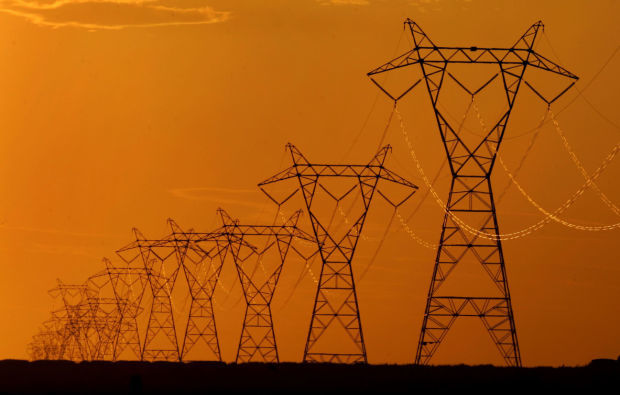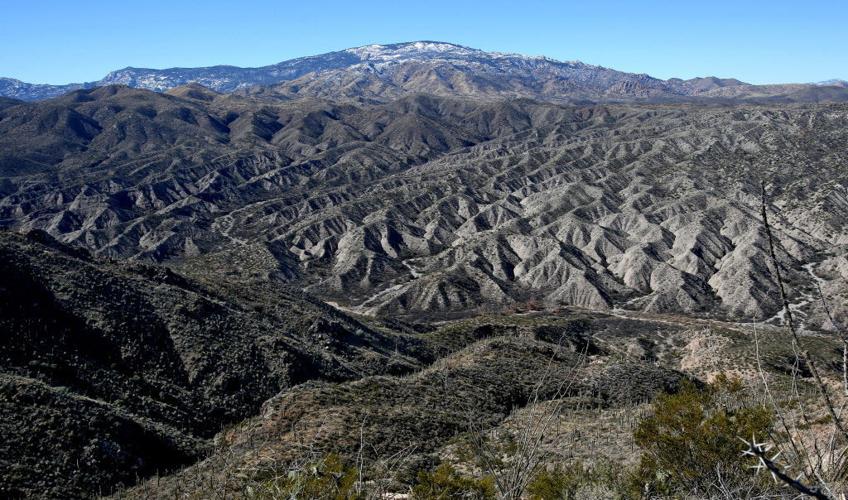The $2 billion, 515-mile-long SunZia power line project got a big boost Wednesday from the Arizona Corporation Commission, which voted 3-2 to approve its construction in this state.
The project involves two power lines, with transmission towers standing an average of 135 feet tall, that would go from central New Mexico into Southern Arizona near Bowie and Willcox before climbing north through the lower San Pedro River Valley, about two to five miles west of the river itself.
Commissioners who voted for the project said its reputed benefits for renewable energy either outweigh negative impacts, or that those impacts can be effectively controlled. The supporters were commission newcomer Andy Tobin and commissioners Bob Stump and Bob Burns.
Opponents said they didn’t feel Arizona would benefit much from the power lines, at least not nearly as much as will New Mexico. They also felt the environmental impacts could be very serious, since they involve the lower San Pedro Valley, by all accounts one of Arizona and the Southwest’s premier biological hot spots. “No” votes were cast by Commission Chairman Doug Little and Commissioner Tom Forese.
The vote by the all-Republican commission grants the power line project a certificate that essentially says it will be economically beneficial while balancing those benefits with environmental impacts — a subject that brought a huge amount of discussion and dissent.
Environmentalist Christina McVie, a leading opponent of the project, said afterward that the commission’s action essentially spells the death knell of what’s “arguably the leading geophysical feature in the Southwest,” the San Pedro River Valley lying north of Benson.
Ian Calkins, a spokesman for project developer SunZia Transmission LLC, said the commission’s vote is a “significant milestone in the development of critical electric infrastructure in the Southwest United States.”
Wednesday’s vote followed two days of sometimes highly emotional, sometimes very detailed comments for and against the line by San Pedro Valley residents, SunZia officials, elected officials, environmentalists and a host of other speakers.
Probably the biggest issue was whether the lines would seriously damage the San Pedro area, through habitat fragmentation, collisions of birds with the power lines and the ability of non-native invasive plants to grow in the power line right-of-way and in roads used to access the lines.
The second biggest was whether the lines will really carry renewable energy, as SunZia said, or simply bring in more fossil fuels such as coal and natural gas from existing or future power plants.
The 10-year conflict over SunZia now moves to New Mexico, from which the lines would start in Lincoln County. New Mexico’s Public Regulatory Commission must approve a formal permit for the line, following a public hearing.
New Mexico’s two Democratic U.S. senators have supported the project, but the Republican congressman whose district the line would run through has opposed it and the state’s land commissioner has taken a go-slow attitude toward it. The state’s largest newspaper, the Albuquerque Journal, has also been critical of it.
Tom Wray, SunZia’s project manager, said the New Mexico commission will have to apply essentially the same criteria as the Arizona Corporation Commission used to decide whether to approve the permit. He said he expects the permit approval process will take about 60 to 90 days, and that the company application will be filed by early summer 2016. The company has said it hopes to have the first line operating by 2021.
At Wednesday’s meeting, the ACC’s Burns used a water-energy link to make the case for SunZia, saying it’s needed in part because of what he sees as impending water shortages in the state due to continued drought that’s reducing flows on the Colorado River.
“If we can’t shift some of this power generation off the water, how can we shift it off if we can’t get power not using water,” Burns said, since solar and wind energy use much less water than conventional forms such as coal- and natural gas- fired power plants.
Chairman Little called running two high voltage power lines through the San Pedro Valley a mistake of the first order.
“I am extremely disappointed in the outcome of this decision and believe there were better alternative routes with significantly less environmental impacts that unfortunately were not approved” when the project went through its federal environmental review, Little said. “I am truly saddened that one of the crown jewels of Arizona’s unspoiled wilderness will be irreparably harmed by this decision.”
But Stump noted that nationally, utilities are spending more than $100 billion a year in grid upgrades, essential to ensuring reliability and integration of renewable energy.
“Today, we have an opportunity to render our infrastructure more reliable for our future, at no cost to ratepayers,” Stump said. “This is, I believe, a pressing need. Let’s also be clear: widespread delivery of renewable energy is impossible without substantial infrastructure upgrades.”
Forese said the project would be a tremendous gain for New Mexico but would do little for Arizona. While SunZia backers said the power lines would bring renewable wind energy from New Mexico to this state, opponents brought out evidence suggesting Arizona would not be a good market for New Mexico-based wind power because this state already has rich solar energy resources.
The opponents, along with a top Tucson Electric Power official, said the main market for any wind energy the lines would bring would be California.
“I’m more frustrated about how Arizona is treated as a colony,” Forese said.





